Watermelon
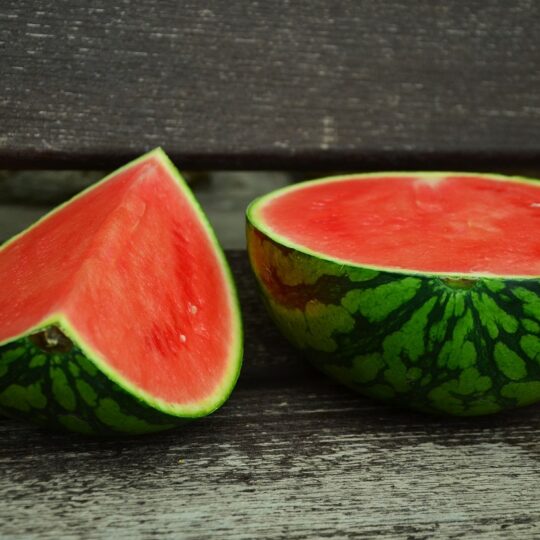
Importance of Watermelons to Oregon
Watermelons are not one of Oregon’s top crops, but they are still important to the state. In 2017, Oregon grew watermelons on around 1,000 acres.1 Almost all of those are in Umatilla County. This is where the famous Hermiston Watermelons come from. Their melons are shipped as far as Maryland and Texas. About 160 farms in Oregon grow watermelon.2
History of Watermelons
Watermelon can be traced back to southern Africa about 5,000 years ago. The melons grown then were tough and bitter. The next records of watermelon come from Egypt. There are paintings of the melons in tombs that are more than 4,000 years old. It is thought that Egyptians must have improved watermelons through plant breeding to make them sweeter.
Colonization brought watermelon to North America. Records show that it was grown in Florida in the 1570s. Native Americans in the south eastern part of the country grew watermelon.
Watermelon continues to be improved for flavor, size, and other traits. One of those was the creation of seedless watermelons in the 1950s.3
Watermelon Varieties
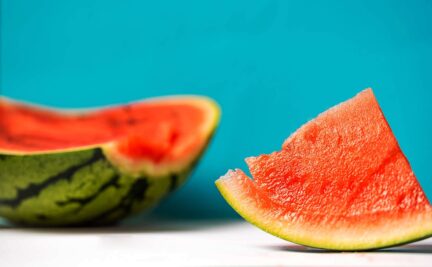
Seedless
Seedless watermelons are usually smaller than melons with seeds. They don’t have the large black seeds that seeded melons have. They do have a few small, white, shriveled seeds, but they are edible. Crimson and Millionaire are two varieties of seedless melons.4
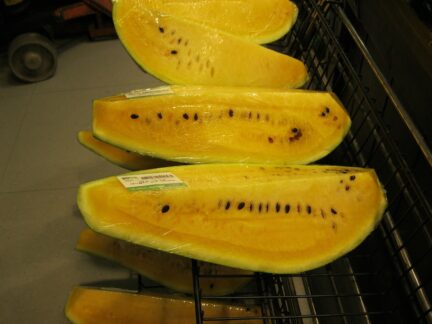
Yellow
Yellow watermelons can range from a bright yellow color to orange. There are seeded and seedless yellow melons. They are yellow because they don’t have lycopene, which makes fruits and vegetables red. Chiffon and Yellow Baby are two yellow watermelon varieties.5
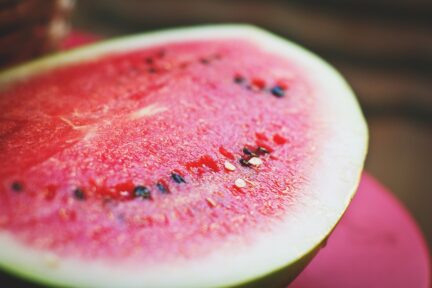
Seeded
Seeded melons have black seeds inside. These melons are usually on the larger side and can weigh up to 50 pounds. Seeded melon rinds are usually bright green and they have red flesh on the inside. Black Diamond and Crimson sweet are two varieties of seeded watermelon.
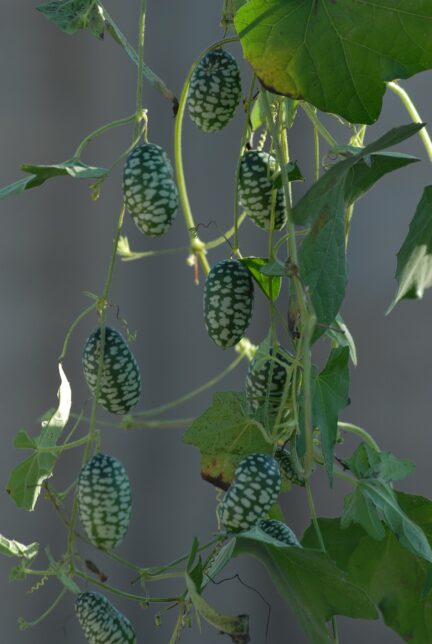
Miniature
Miniature watermelons are sometimes called personal watermelons. They are usually the size of a cantaloupe or smaller. Their flesh can be pink to red, just like regular sized melons.
Life Cycle of a Watermelon
Beds have to be made before watermelon can be planted. Watermelon beds are 4 feet wide and 8-12 inches tall. They are usually lined with drip irrigation and covered in black plastic. The plastic makes the soil warmer and makes it harder for weeds to grow. Watermelons are usually planted into the beds as transplants, not seeds. Planting is from early April to early May.
Bloom and Pollination
Watermelons need bees for pollination. Each watermelon plant has female flowers and male flowers. The fruit grows from female flowers. They are the ones that need to be pollinated. Bees visit the flowers to collect nectar and they transfer pollen from male flowers to female flowers. Each watermelon flower is only able to be pollinated for one day. Farmers use one bee hive per acre to make sure there are enough bees to pollinate the flowers. Seedless watermelon needs pollen from a seeded variety. Farmers plant seeded watermelon varieties in their seedless watermelon fields so that pollination happens.
Once a female flower is pollinated, fruit can begin to grow. A watermelon takes about one to one and a half months to become ripe after pollination. Then it is ready to harvest.

Watermelon Harvest
Harvest usually begins in mid-July in eastern Oregon. That’s where most of the state’s watermelons are grown. It can last until September for some varieties or later plantings. Watermelons have to be harvested when they are ripe. They don’t ripen off the vine, like some fruits do. A ripe melon has a yellow patch where it sat on the ground while growing.
Watermelons are harvested by hand. Field workers walk through the rows, cutting ripe melons from the vine. The melons are then taken from the field to be sold. Watermelons don’t store very well. They should be eaten no more than 3 weeks after harvest, for the best quality.
https://www.facebook.com/KAPPKVEW/videos/hermiston-watermelon-harvest/10153997693774746/
Pests and Diseases
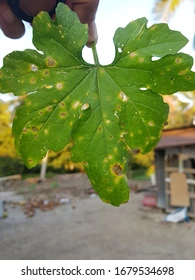
Alternaria Leaf Spot
Alternaria leaf spot is caused by a fungus that lives in the soil. It causes brown spots to form on the leaves that can dry and fall out. The leaves and vines of watermelon plants can be killed by infection. Melons will not grow and ripen without live vines and leaves. If melons do grow on infected plants, the skin can be tough and dry.6
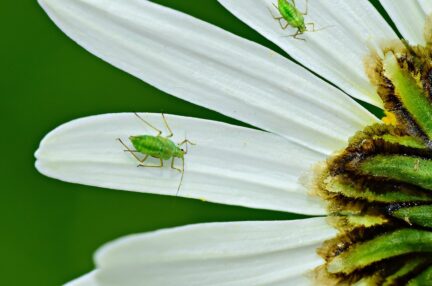
Aphids
Aphids are one of the insects that can damage watermelons. They feed on the plants, sucking sap out of leaves and vines. This can cause the leaves to wilt and curl. Aphids can also spread viruses and diseases between plants. They can be a problem throughout the whole growing season.
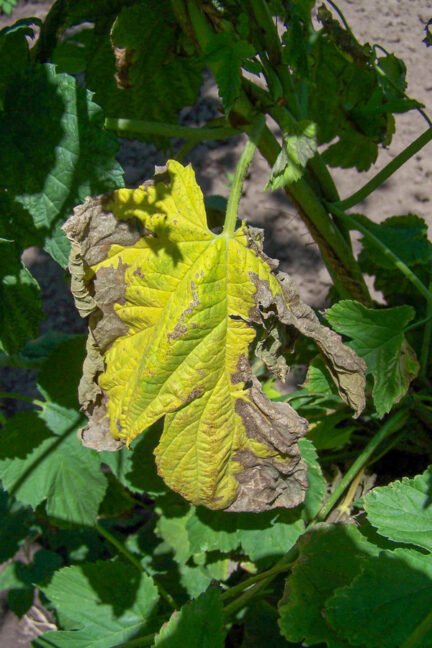
Verticillium Wilt
Verticillium wilt is caused by a fungus that lives in the soil. It can infect the roots of a watermelon and spread through the whole plant. The leaves can turn yellow and wilt. Plants with dead leaves can’t photosynthesize well and they might not grow to be large. Verticillium wilt can kill entire watermelon plants.7
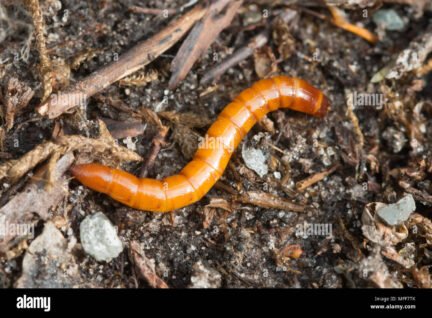
Wireworms
Wireworms can cause damage to watermelons during the summer. They feed on roots and right at the ground level. This can lead to injured or dead watermelon plants. Wireworms are larvae and grow into click beetles as adults.8
Uses for Watermelons
Watermelon is mostly eaten fresh. It is an excellent source of vitamin C. Most people eat it by itself. It can also be good in salads and drinks. Frozen watermelon can be a treat used in sorbet or popsicles.
Fun Facts About Watermelon!
- The Guinness Record holding watermelon was 350.5 pounds
- There are more than 1,200 watermelon varieties grown across the world
- Watermelons are 92% water
- Watermelon is in the same plant family as cucumber and squash
Vocabulary Terms
Selectively changing the traits of a plant.
The process of forming settlements.
A type of irrigation system that can save water by dripping water slowly to the roots of plants.
The soft or juicy part beneath the skin of a fruit or vegetable.
An insect after it hatches from an egg and before it changes into an adult.
A red pigment found in tomatoes and other red fruits and vegetables.
Using sunlight to change water and carbon dioxide into food for itself.
A thick, firm outer layer or covering.
A characteristic or quality that makes a plant different from others.
A plant that has been grown from seed in a tray and then planted into a field.
Related Resources and Sources
- Oregon Harvest for Schools, Oregon Watermelon
- The Spruce Eats, All About the 4 Types of Watermelon
- Plant Village, Watermelon
